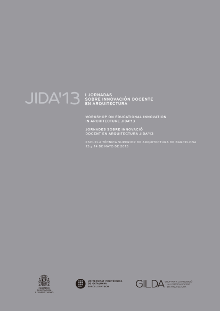Instrumental scales and paradigms in the learning of urbanism
DOI:
https://doi.org/10.5821/jida.2013.5015Abstract
Scale usually refers to the sequence of modulated approaches to the same object, or to the size in which an image is reproduced. However, in urbanism, scale does not measure things but the character of phenomena. Thus, it is essential to identify the themes and the structural elements of each scale and treat them simultaneously. The aim of this paper resides in exploring the potential of a methodology for addressing the problem of scale in urbanism’s learning by the combined and iterative implementation of five instrumental paradigms. For this purpose we conducted a case study for the third course of Urbanism 2012-2013, at the School of Architecture (ESARQ - UIC).View DOI information in DOIBoard Crossref (by UPC)






















